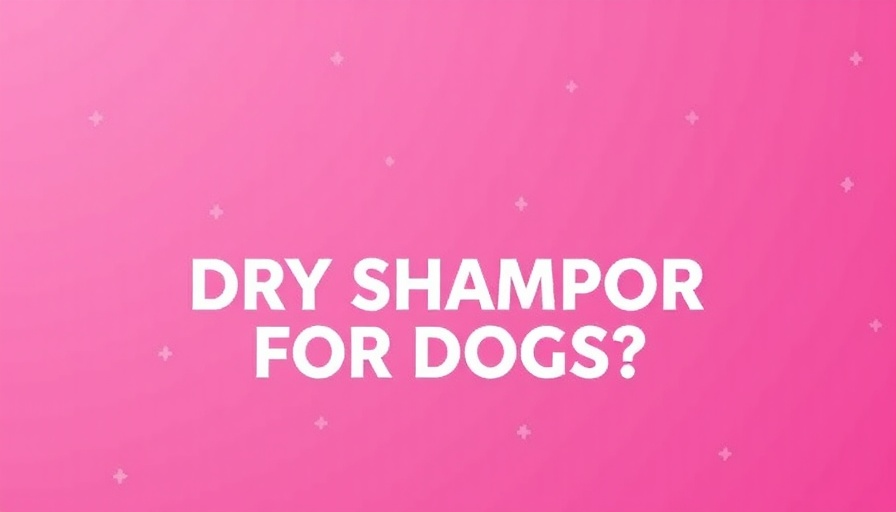
Understanding Dry Dog Shampoo vs. Waterless Dog Shampoo: What Every Dog Owner Needs to Know
As a loving dog owner, keeping your furry friend clean and healthy is a top priority. However, with busy lifestyles, dog baths can often slip down the to-do list, leading many to seek alternative solutions. Recently, discussions have ignited online about the efficacy and safety of dry dog shampoo and waterless dog shampoo, products designed for quick cleans without a traditional bath. But what do these products really offer your pup?
The Mechanics of Dry Dog Shampoo
Dry dog shampoo primarily works by absorbing excess oils and moisture from your dog's coat. Ingredients like cornstarch, baking soda, and essential oils are common in these products and can provide some deodorizing benefit. However, they fall short in delivering a thorough clean, as they don't rinse away dirt, bacteria, and environmental toxins as traditional shampoos do.
Many owners find dry shampoos particularly useful for dogs that are anxious around water or for quick clean-ups. However, it’s important for owners to recognize that overusing dry shampoo can lead to skin irritation. This is especially true for dogs with sensitive skin, as the powder can absorb too much natural oil, leading to dryness and itchiness.
Waterless Dog Shampoo Explained
On the other hand, waterless dog shampoos utilize a foaming formula designed to break down dirt and bind with oils in your dog’s fur, making it easy to wipe away. However, unlike dry shampoo, the residues from waterless shampoos typically remain on the coat rather than being washed off. This can lead to a scenario where the coat becomes dirtier over time as residues attract additional dirt.
Like dry shampoos, waterless shampoos may contain harsh ingredients that could cause allergic reactions or skin irritation. Moreover, since they are leave-on products, any harmful chemicals may be ingested by your dog when they lick their fur, raising concerns about long-term health effects.
Expert Opinions and Recommendations
Veterinarian advice remains clear: neither dry nor waterless shampoos can replicate the benefits of a traditional bath. Renowned holistic veterinarian, Dr. Terry Spencer, emphasizes that the use of these products often masks odors without truly cleaning the dog. In her opinion, it's always preferable to address the underlying cause of any odors rather than relying on these temporary solutions.
While some products may claim to be natural or organic, as highlighted by reviews from Whole Dog Journal, it's vital that dog owners ensure they check labels carefully. Many products labeled as 'natural' can still contain harmful ingredients. Given the potential risks associated with both types of shampoos, it’s prudent for pet owners to be selective and educated about their options.
The Role of Traditional Baths in Pet Grooming
Experts suggest reserving dry or waterless shampoos as emergency backups rather than as primary grooming solutions. A good rule of thumb is to give your dog a bath with water and a gentle shampoo at least once a month or more often, depending on their activity level and coat type. This regular grooming not only helps keep your dog clean and odor-free but also promotes healthy skin and a shiny coat.
Conclusion: Choose Wisely for Your Pet
In conclusion, while both dry dog shampoo and waterless dog shampoo offer convenience, they come with caveats that could affect your dog's health. Understanding the differences can help you make an informed decision that prioritizes the well-being of your canine companion. Remember, nothing beats a proper bath for maintaining your pet’s overall hygiene and health. As a dog owner, nurturing your dog's happiness and health should always guide your product choices!
 Add Row
Add Row  Add
Add 


Write A Comment